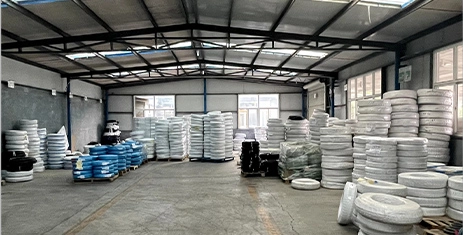Effective Solutions for Repairing Power Steering Hose Leaks in Your Vehicle
Understanding and Repairing Power Steering Hose Leaks
Power steering systems are an integral part of modern automobiles, providing drivers with the ease of maneuverability and control over their vehicles. However, like any mechanical system, these systems are prone to wear and tear, and one common issue that many drivers encounter is a leak in the power steering hose. This article will delve into the causes, symptoms, and repair methods for power steering hose leaks, helping you maintain your vehicle's performance and safety.
What is a Power Steering Hose?
The power steering hose is a crucial component of the power steering system. It is responsible for transporting hydraulic fluid from the power steering pump to the steering gear. This fluid is essential for reducing the amount of effort needed to turn the steering wheel, allowing for smoother and more manageable steering, particularly at low speeds or when parking.
Common Causes of Power Steering Hose Leaks
Several factors can contribute to the deterioration of power steering hoses, leading to leaks
1. Aging and Wear Over time, rubber hoses can degrade due to exposure to heat, friction, and environmental elements. The material can also become brittle and crack, especially if not regularly maintained.
2. High Pressure Changes in pressure within the power steering system can stress the hoses. If the system is overfilled with fluid or if there is a malfunction in the pump, this can lead to excessive pressure, causing the hoses to burst or leak.
3. Corrosion Metal components connected to the hoses can corrode, leading to leaks. This is particularly true in regions that use road salt, which can accelerate rusting and degradation.
4. Improper Installation If a hose is incorrectly installed or damaged during installation, it can lead to leaks. Always ensure hoses are fitted snugly and correctly to prevent issues.
Symptoms of a Power Steering Hose Leak
Detecting a power steering hose leak early is essential to avoid more extensive damage to the system. Here are some common symptoms to look out for
1. Fluid Spots One of the most evident signs of a leak is the appearance of fluid spots underneath your vehicle, especially if they are reddish or brownish, indicating power steering fluid.
power steering hose leak repair

2. Difficulty Steering If you notice it becomes harder to steer your vehicle, it may be due to a lack of hydraulic fluid, often a symptom of a leak.
3. Whining Noise A whining or squealing sound when turning the steering wheel can indicate air in the system, often caused by low fluid levels due to a leak.
4. Low Fluid Levels Regularly checking and finding low fluid levels can be an indicator of a leak. If you find yourself needing to refill the reservoir frequently, there may be an underlying issue.
Repairing Power Steering Hose Leaks
Once you’ve identified a power steering hose leak, it’s important to address it promptly to prevent further damage to the power steering system. Here’s how to repair it
1. Inspection Start by thoroughly inspecting the power steering hose and surrounding components. Look for cracks, frays, or any signs of damage.
2. Fluid Replacement Before making repairs, check the fluid level and top it off if necessary. This will ensure the system operates correctly during repairs.
3. Replacing the Hose If the hose is damaged beyond repair, the best solution is to replace it entirely. Purchase a compatible power steering hose and follow these steps - Disconnect the battery for safety. - Use appropriate tools to remove the old hose from the pump and rack. - Install the new hose, ensuring all connections are secure and using new washers if needed.
4. Bleeding the System After replacing the hose, you will need to bleed the power steering system to remove any air trapped inside. Follow the vehicle’s service manual for the proper bleeding procedure.
5. Test Drive Once the repair is complete, take the vehicle for a test drive to ensure the steering is smooth and there are no signs of leaks.
Conclusion
Power steering hose leaks can hinder your driving experience and pose safety risks, but with prompt identification and repair, they can be managed effectively. Regular maintenance and inspections can help prevent leaks from occurring, ensuring your power steering system remains functional and reliable. If you’re uncomfortable performing repairs yourself, it’s always wise to consult a professional mechanic. Maintaining your vehicle's power steering system not only enhances performance but also contributes to overall safety on the road.
-
Ultimate Spiral Protection for Hoses & CablesNewsJun.26,2025
-
The Ultimate Quick-Connect Solutions for Every NeedNewsJun.26,2025
-
SAE J1401 Brake Hose: Reliable Choice for Safe BrakingNewsJun.26,2025
-
Reliable J2064 A/C Hoses for Real-World Cooling NeedsNewsJun.26,2025
-
Heavy-Duty Sewer Jetting Hoses Built to LastNewsJun.26,2025
-
Fix Power Steering Tube Leaks Fast – Durable & Affordable SolutionNewsJun.26,2025

